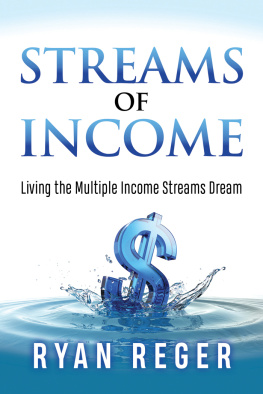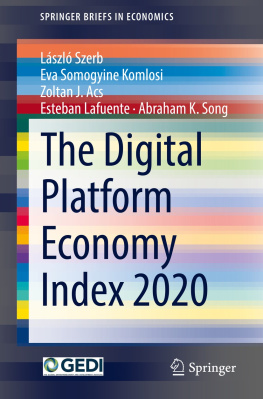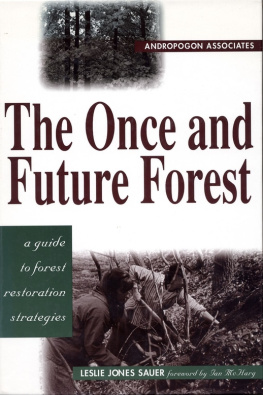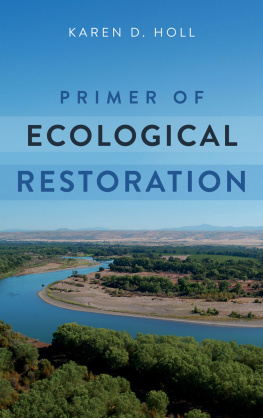Rebecca Lave - Streams of Revenue: The Restoration Economy and the Ecosystems It Creates
Here you can read online Rebecca Lave - Streams of Revenue: The Restoration Economy and the Ecosystems It Creates full text of the book (entire story) in english for free. Download pdf and epub, get meaning, cover and reviews about this ebook. year: 2021, publisher: MIT Press, genre: Business. Description of the work, (preface) as well as reviews are available. Best literature library LitArk.com created for fans of good reading and offers a wide selection of genres:
Romance novel
Science fiction
Adventure
Detective
Science
History
Home and family
Prose
Art
Politics
Computer
Non-fiction
Religion
Business
Children
Humor
Choose a favorite category and find really read worthwhile books. Enjoy immersion in the world of imagination, feel the emotions of the characters or learn something new for yourself, make an fascinating discovery.

- Book:Streams of Revenue: The Restoration Economy and the Ecosystems It Creates
- Author:
- Publisher:MIT Press
- Genre:
- Year:2021
- Rating:5 / 5
- Favourites:Add to favourites
- Your mark:
- 100
- 1
- 2
- 3
- 4
- 5
Streams of Revenue: The Restoration Economy and the Ecosystems It Creates: summary, description and annotation
We offer to read an annotation, description, summary or preface (depends on what the author of the book "Streams of Revenue: The Restoration Economy and the Ecosystems It Creates" wrote himself). If you haven't found the necessary information about the book — write in the comments, we will try to find it.
Rebecca Lave: author's other books
Who wrote Streams of Revenue: The Restoration Economy and the Ecosystems It Creates? Find out the surname, the name of the author of the book and a list of all author's works by series.
Streams of Revenue: The Restoration Economy and the Ecosystems It Creates — read online for free the complete book (whole text) full work
Below is the text of the book, divided by pages. System saving the place of the last page read, allows you to conveniently read the book "Streams of Revenue: The Restoration Economy and the Ecosystems It Creates" online for free, without having to search again every time where you left off. Put a bookmark, and you can go to the page where you finished reading at any time.
Font size:
Interval:
Bookmark:
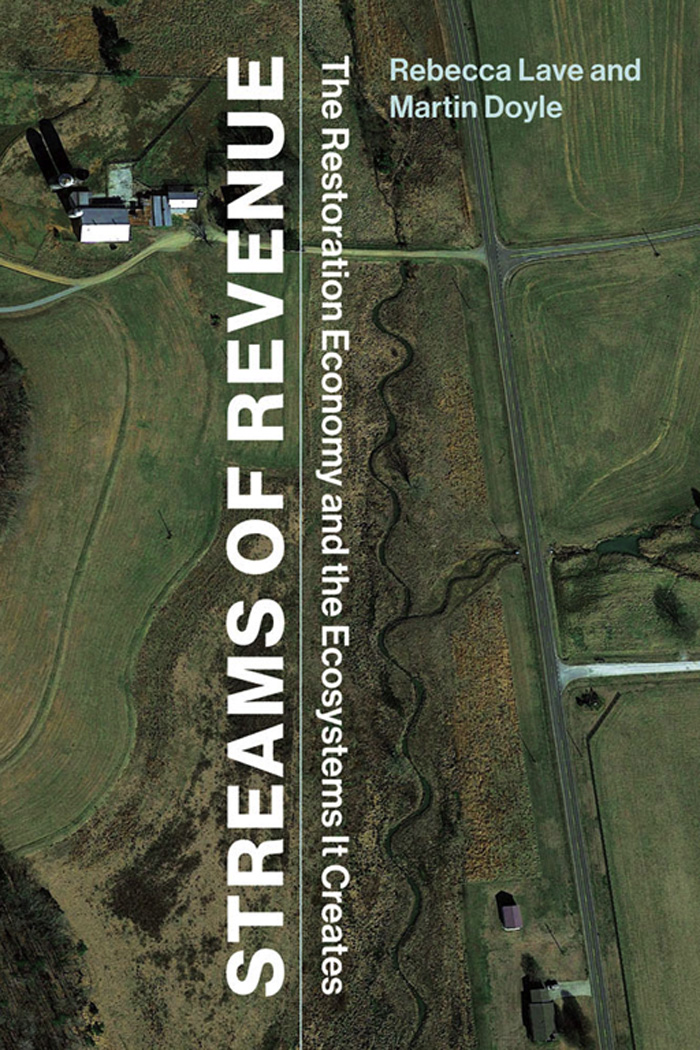
Rebecca Lave and Martin Doyle
The MIT Press
Cambridge, Massachusetts
London, England
2020 Massachusetts Institute of Technology
All rights reserved. No part of this book may be reproduced in any form by any electronic or mechanical means (including photocopying, recording, or information storage and retrieval) without permission in writing from the publisher.
This book was set in ITC Stone Serif Std and ITC Stone Sans Std by New Best-set Typesetters Ltd.
Library of Congress Cataloging-in-Publication Data.
Names: Lave, Rebecca, 1970- author. | Doyle, Martin, 1973- author.
Title: Streams of revenue : the restoration economy and the ecosystems it creates / Rebecca Lave and Martin Doyle.
Description: Cambridge, Massachusetts : The MIT Press, [2020] | Includes bibliographical references and index.
Identifiers: LCCN 2019047639 | ISBN 9780262539197 (paperback)
Subjects: LCSH: United States. Federal Water Pollution Control Act Amendments of 1972. | Wetland mitigation bankingUnited States. | Stream restorationEconomic aspectsUnited States. | Restoration ecologyEconomic aspectsUnited States. | Ecosystem servicesUnited States. | Environmental policyEconomic aspectsUnited States.
Classification: LCC HD1683.U5 L38 2020 | DDC 363.739/47dc23
LC record available at https://lccn.loc.gov/2019047639
10 9 8 7 6 5 4 3 2 1
d_r0
One of the most influential, and perhaps surprising, developments in environmental policy in recent decades is the idea that we can protect the environment from the negative impacts of economic development by making environmental protection itself more economic. The goal is to reduce environmental harm not by preventing it, but by pricing it. Want to build a housing development on a piece of land threaded with streams? With an environmental market in place, you can do that as long as you pay to offset the damage through restoration of comparable streams elsewhere. Or, in an example that may be more familiar, want to keep emitting greenhouse gases? Fine. You just have to buy carbon credits produced by reducing emissions at another site. Starting in the early 1990s, U.S. environmental policy has supplemented command-and-control regulation (thou shalt not) with market-based approaches (thou shalt pay for your harm) in an attempt to improve conservation outcomes. There are now many environmental markets in the United States (and internationally) that are intended to improve conservation outcomes for everything from prairies and streams to woodpeckers and flowering shrubs.
Even in the United States, where capitalism has long been something close to a national religion, this shift toward market-based environmental management raised some eyebrows. There have been heated debates about economic theory, ecological value, and the details of policy. But at this point in time, environmental markets in the United States are more than two decades old and are firmly established. Haphazard, deliberately vague, and patchy policies have been smoothed out and (at least to some extent) standardized. What is not at all clear is whether these markets have actually improved environmental well-being. This book is the first sustained attempt to find out. Using stream mitigation banking (the market for rivers and streams under Section 404 of the Clean Water Act) as a case, we explain where market-based approaches came from, how they work in practice, and what they do on the ground.
Rivers and streams in the United States could use some help, as they have taken quite a pounding since European settlers arrived. They have been straightened, shortened, and put in pipes underground. They have been dammed, diverted, and cut off from their floodplains. They have been dredged, buried in sediment, and dredged again, and they have been polluted to the point of biological death. Almost anytime there was a choice between the well-being of a stream and human ease, the stream lost.
Efforts to prevent or at least undo harm to streams began in the late 1800s, but only grew legislative teeth in late 1960s and early 1970s. The Clean Water Act, in particular, was spectacularly successful in many ways. As one example, it is now possible to swim in most rivers and streams in the United States without having to take a heavy course of antibiotics afterward. The question is how to get us the rest of the way: how do we prevent further harms to rivers and streams, and even improve their ecological, chemical, and physical character and function? Can a market for streams do what command-and-control legislation has (thus far at least) failed to do?
The answer to the latter question is no, or at least not yet. The idea of allowing much-needed development to harm ecosystems as long as we restore comparable ecosystems elsewhere turns out to be quite hard to operationalize. It is very difficult to ensure equivalence between ecosystems that are harmed and those that are restored. Further, we are not yet able to reliably restore most (perhaps all) ecosystem types; natural systems are highly complex, and we are far from understanding the full scope of that complexity, much less being able to reproduce it. Finally, in addition to being complex, ecosystems are messy, dynamic, and highly interconnected; standardizing them into simple, tradeable commodities in order to create robust markets is certainly doable, but it raises unsettling questions about what, if anything, such simplified versions of ecosystems actually achieve. We thus argue that ecosystem service markets, very much including stream mitigation banking, have not delivered on the conservation goals of their advocates and should be radically reconfigured.
We have written this book with a strong emphasis on clarity and accessibility. We hope it will reach multiple audiences, from those of you studying to become environmental managers in the public, private, or nonprofit sector to those of you who already do such work. At some point in your careers, it is very likely that you will be asked to help set up an environmental market, to keep an existing one running, or to manage a project that is part of a market. This book has much of what you need to know about where these markets come from and how they work in practice. You will not find heavy theory or science in here, but suggested readings in the endnotes provide entrance points if you want to dive in. We also hope this book will be of interest to river scientists trying to figure out what is going on at their field sites, to ecological and environmental economists who have been central to conceptualizing and critiquing market-based approaches, and to advocacy groups evaluating whether or not to support pricing environmental harms.
The stakes here are high. We humans damage the world around us in many ways. Regulations are intended to limit that damage: to provide a ceiling beyond which environmental degradation should not rise. If market-based approaches cannot build and secure that ceiling, we need to change them.
This book was a long time in the making. Our first conversation about mitigation banking (in fact, our first conversation ever) took place by phone in 2006 when Rebecca was a graduate student at UC Berkeley and Martin was an assistant professor at the University of North Carolina. In the thirteen years since, we submitted, resubmitted, resubmitted again, and finally won a grant from the National Science Foundation to fund this work (BCS 1213827), conducted research throughout the United States, wrote multiple articles, gave dozens of talks on environmental markets, switched institutions, and during all of that time were physically in the same room fewer than half a dozen times. Nevertheless, there has been a consistency in idea-sharing that has been unusually productive and delightful, and allowed us to sustain the project over time and space.
Next pageFont size:
Interval:
Bookmark:
Similar books «Streams of Revenue: The Restoration Economy and the Ecosystems It Creates»
Look at similar books to Streams of Revenue: The Restoration Economy and the Ecosystems It Creates. We have selected literature similar in name and meaning in the hope of providing readers with more options to find new, interesting, not yet read works.
Discussion, reviews of the book Streams of Revenue: The Restoration Economy and the Ecosystems It Creates and just readers' own opinions. Leave your comments, write what you think about the work, its meaning or the main characters. Specify what exactly you liked and what you didn't like, and why you think so.


